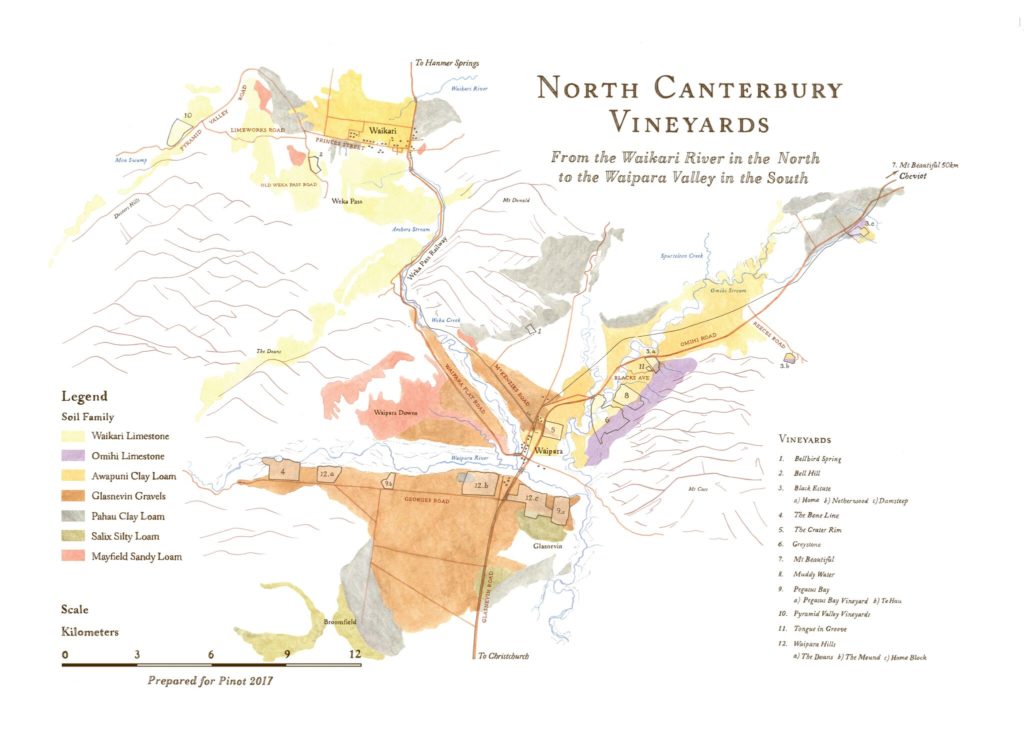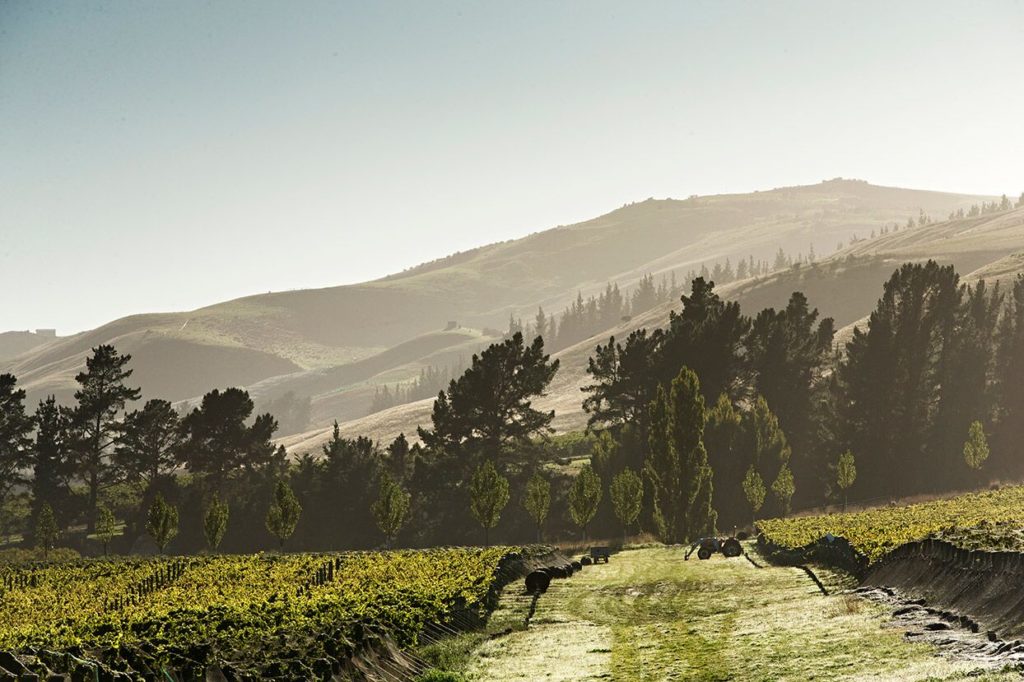Waipara wine region on New Zealand’s South Island is known for its excellent Riesling and Pinot Noir, and also for being the wine region with the longest hang time in the country despite its maritime climate and location. Just an hour from Christchurch, Waipara valley is becoming a popular wine route and the source of interesting wines which add a different dimension to New Zealand’s wine portfolio. In this Waipara wine region guide we look at all the terroir essentials (climate, soil, winemaking, viticulture) and give you the fast facts on this unique wine region in New Zealand.
Waipara wine region guide
Where is Waipara anyway?
Waipara is the main wine region within Canterbury, sandwiched between Central Otago to the south and Marlborough to the north. Waipara wine valley is sheltered between the Teviotdale hills to the east and the Southern Alps to the west.

History of Waipara wine
The first vines were planted in Canterbury in 1975, in the same year that Lincoln University (the main viticulture university in the region) planted an experimental block and a group of enthusiastic medics also planted an experimental block in Christchurch. A few years later vines were being planted in Waipara valley and the 1980s saw the beginning of viticulture in the valley, which increased more significantly in the mid-1990s and into the 2000s.
Wines of New Zealand describes the Waipara wine region as ‘New Zealand’s fastest growing wine region’; however the growth statistics are somewhat skewed by two large investments that arrived in the region at that time. The majority of Waipara’s wineries are smaller, family-run businesses. Today there are over 1,300 hectares planted.
Waipara valley production area & volume
- 1,300 hectares under vine in Waipara
- 80 vineyards in Waipara Valley
- 25 wineries in Waipara wine region
- Annual Waipara wine production is 100,000 cases
- Waipara counts for 3% of New Zealand’s total production
The Essentials of Terroir: Waipara wine region guide
Climate in Waipara valley
Waipara valley is protected by two mountain ranges: the Teviotdale coastal hills run along the east coast, buffering the region from the cold and wet maritime fronts that often come in from the Pacific, and the Southern Alps to the east also offer a rain shadow from the wettest weather in New Zealand (which falls on the west coast), allowing warm, north-westerly foehn winds to come through and raise the temperature of the growing region.
This combination means that Waipara is more protected from the wet weather and can have much higher temperature peaks, aiding ripeness and maturity. The Waipara wine region has one of the longest growing seasons in New Zealand (if not the longest) with bud break sometimes starting at the end of September, and harvest for late-harvest styles can finish in June. The longer hang times allow Waipara wines to reach an outstanding level of aromatic complexity and concentration in the popular aromatic white varieties, and botrytised late harvest styles are also an option.

The coastal mountains in Waipara (Greystone)
Rainfall in Waipara
550mm a year, spread throughout the year. Some producers do irrigate through drip irrigation.
Temperatures in Waipara
Each vintage can see quite different temperature fluctuations and, while Waipara valley tends to have a more moderate temperature due to the coastal influence, there can be peaks above 30°C in the summer. Evenings are mild in the summer and the growing season is long and dry.
Dom Maxwell on the climate of Waipara & why its terroir is suitable for Pinot Noir
Other Climate Notes: Waipara wine region guide
Frost is a significant risk in spring and also just before harvest, which can negatively affect yield and ripening respectively. Wind turbines, frost pots and sprinkler systems are installed in almost all of the vineyards in Waipara, which is one of the wine regions in New Zealand that is most vulnerable to frost.
The nor’wester foehn wind is also a significant climate contributor, bringing in warm and sometimes fiercely fast winds, followed by cold winds.
The Waipara wine region has changeable weather throughout the year. However, weather fronts tend to move quite quickly, meaning that if it does rain during harvest it doesn’t usually last very long.
Soils in Waipara wine region
Heavy clay soils, gravel and limestone – often in one big mix – are the most common soils in the Waipara wine region. Some vineyards are planted on river terraces.
Longitude in Waipara
172.76°E
Latitude in Waipara
43.05°S
Altitude in Waipara
Vineyards range between 60 to 220 metres above sea level.
Viticulture Facts & Vineyard Management: Waipara wine region guide
The original vines planted in the late 80s and early 90s were all planted on their own roots. So far phylloxera hasn’t reached Waipara valley, however, modern vineyards are all planted on rootstocks.
Vine Training systems
Modern VSP (usually with drip irrigation)
Harvest time in Waipara
An early budbreak in September or early October and a potential hang time until June gives Waipara a long growing season. Harvest tends to start in April, depending on the vintage.
Viticultural challenges in Waipara
Frost is the greatest threat in Waipara and increasingly powdery mildew. Botrytis tends to work in producers’ favour for a richer style of aromatic white wines like Riesling.
Grape varieties in Waipara wine region

The most revered varieties in Waipara are Pinot Noir and Riesling, which together make up over half of plantings (with Pinot Noir representing just over 1/3 of Waipara’s vineyard plantings).
Pinot Gris and Chardonnay follow, and other aromatic whites and some other reds are planted.
Ed Donaldson on Waipara Riesling
More on Waipara wine region:
Other guides to New Zealand wine:
Photos from Greystone Wines in Waipara. Greystone is part of the Fine Wines of New Zealand programme which showcases some of the top wines and producers in New Zealand, find out more online.

